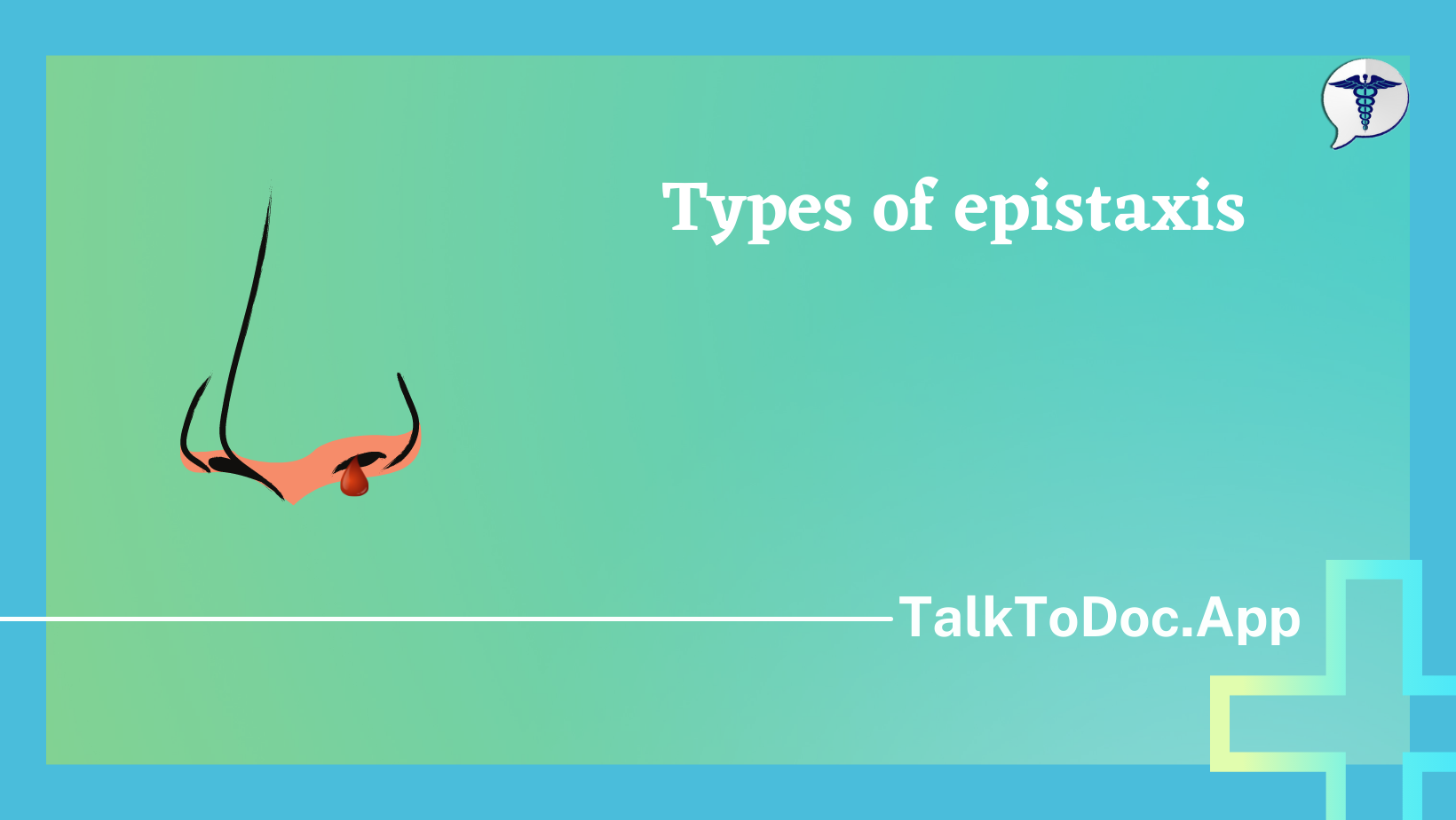Types of Epistaxis, which is also known as Nose Bleed, as the name suggests means bleeding from either one or both nostril due to rupture of blood vessels in nasal mucosa.
It is a disease of concern among the sufferers, so much so that patient’s blood pressure spikes due to the site of blood which causes panic and anxiety to the patient. It usually has a great prognosis except when the bleeding is diffuse and extreme measures are required to stop the bleed and achieve hemostasis.
Hence it is crucial for us to know what it is? what are the causative factors responsible for it? and the basic steps we can follow to manage it.
Etiology (cause) of Epistaxis
- The most common cause in children is nose picking causing anterior epistaxis.
- Most common cause for posterior epistaxis is idiopathic (not known),
- Severe head or nasal trauma.
- Other causes include elderly, seasonal (winter/autumn season) , drugs (NSAIDs- nonsteroidal anti-inflammatory drugs)
- Alcohol intake within last 24hours.
- Paranasal mass
- Foreign body in the nasal cavity.
The most commonly believed cause, HYPERTENSION is not a cause of Epistaxis. The blood pressure of patient rises due to anxiety because of bleeding.
Who are more prone for Epistaxis?
Risk Factors of Epistaxis
- Children
- Frequent nose picking or forceful nose blowing
- Outdoor sports with lack of protective equipments
- Allergies, Cold or dry environment
- Upper respiratory tract infections
- Smoking
Systemic risk factors
- Bleeding disorder like haemophilia, Von willebrand disease.
- Patient on blood thinners like aspirin, warfarin, having Thrombocytopenia (low platelet counts).
- Pregnancy (due to high venous pressure).
Types of Epistaxis
- Anterior Epistaxis
- Posterior Epistaxis
Anterior Epistaxis
90% of the epistaxis is anterior, which means bleed comes out of the nares.
The most common site of anterior epistaxis is little’s area, let’s learn more about this area.

Little’s Area/ kiesselbach’s plexus
It is arterial plexus (Anastomosis of arteries) formed by 4 branches supplying oxygenated blood to the nasal septum.
These 4 branches are:
- The anterior ethmoidal artery, a branch of the ophthalmic artery (branch of Internal carotid Artery).
- The sphenopalatine artery, a terminal branch of the maxillary artery.
- The greater palatine artery, a branch of the maxillary artery.
- Septal branch of the superior labial artery, a branch of the facial artery.
It is important to note that though it provide blood supply to the nasal septum, posterior ethmoidal artery does not contribute to the little’s area.
Posterior Epistaxis
Less common and usually asymptomatic.
Bleed goes into the Nasopharynx posteriorly or in the throat. Sometimes it may even resemble anterior epistaxis since blood comes out via nares.
Most common site is woodruff’s plexus. It is a venous plexus, posterior to inferior turbinate supplied by Sphenopalatine artery and ascending pharyngeal artery.
Treatment of Epistaxis
Epistaxis is generally not an emergency problem but the person suffering from active bleed might feel so. It’s important to relax and calm the patient first before further management.
Anterior Epistaxis
Whenever you experience epistaxis or nosebleed follow these important steps:
- Gently blow nose and clear clots.
- Trotter’s method
Pinch the soft or the cartilaginous part of your nose for 5 minutes. Always sit bending forward and never backward because tilting your head backward might let your bleed seep into Nasopharynx and enter your airway(causing cough, hemoptysis) or even your gut(nausea, vomiting & even Hematemesis). Hence it is of utmost Importance not to let patient lay down on bed. - Rush to hospital as soon as possible, in order to locate the bleed and stop it or to find out the cause of bleeding. Your doctor will access your nasal cavity using light source and speculum to look for bleeding, excoriations or scabbing.
- Electrocautery: A procedure that uses heat from an electric current to destroy the bleeding vessel there by achieving Hemostasis.
Chemical cautery using silver nitrate (AgNO3), Trichloro Acetic Acid (TCA)
Posterior Epistaxis
- If the bleeding is posterior and the bleeding point is not visible the treatment of choice is endoscopic electrocautery or ligation.
- In case of profuse bleeding, anterior nasal packing is done, if not responding both the nostrils are packed for 2-3days.
- In resistant cases, endoscopic sphenopalatine artery ligation(ESPAL) is done.

7 Tips to Prevent Epistaxis
- Always do your complete blood profile test to rule out any bleeding disorders.
- Keep your nose moist specially in winter.
- Do not pick your nose specially children and adults with long nails.
- If recurrent epistaxis occur, coat the inside of your nostrils using petroleum jelly or saline nasal gel when not bleeding to prevent it.
- Do not perform strenuous activity while bending forward.
- Do not lift heavy weights in case of recurrence.
- Take steam regularly at least twice a day.


Awesome words 👍
Very good
Thank You So Much!